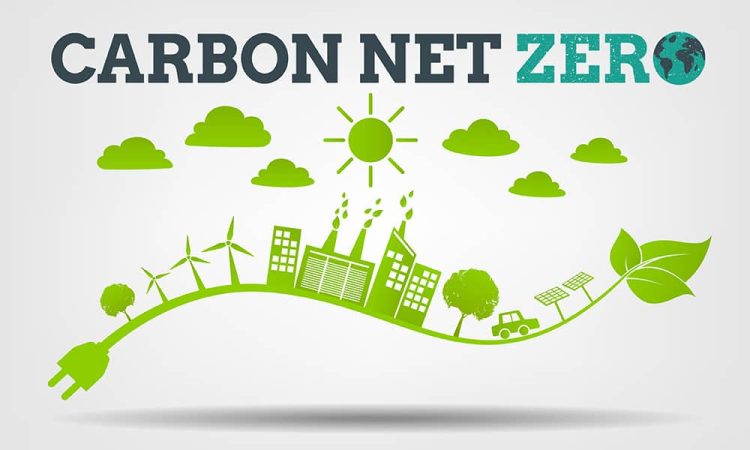
As the world moves towards a net-zero carbon future, industries must adopt more sustainable practices to reduce their carbon footprint. This is particularly important in heat treatment, where high-temperature furnaces are used extensively. However, there is a growing interest in using atmosphere-controlled furnaces for net-zero carbon heat treatment. This blog will explore the potential benefits of atmosphere-controlled furnaces for net-zero carbon heat treatment.
What is an Atmosphere Controlled Furnace?
An atmosphere-controlled furnace is a heat treatment system that allows the user to control the environment within the furnace during the heating and cooling process. Various methods can achieve a controlled atmosphere, including using inert, reducing, and oxidizing gases.
What is Net-Zero Carbon Heat Treatment?
Net-zero carbon heat treatment involves the use of heat treatment processes that have zero net carbon emissions. This means an equal amount of carbon sequestration offsets any carbon emissions produced during the heat treatment. Achieving net-zero carbon heat treatment requires using low-carbon energy sources and highly efficient equipment, such as atmosphere-controlled furnaces.
Benefits of Atmosphere-Controlled Furnaces for Net-Zero Carbon
-
Energy Efficiency
It is highly efficient and use less energy compared to traditional furnaces. They design them to create a controlled environment that requires less energy to maintain the desired temperature. As a result, they need less energy to operate, which leads to lower carbon emissions.
-
Reduced Emissions
Atmosphere-controlled furnaces emit fewer greenhouse gases compared to traditional furnaces. This is because they create a controlled environment that prevents atmospheric reactions, reducing carbon emissions produced during heat treatment. Some atmosphere-controlled furnaces, such as vacuum furnaces, have zero emissions.
-
Improved Product Quality
It enable the user to achieve precise temperature control, which leads to improved product quality. The controlled environment in these furnaces ensures the completion of the desired metallurgical reaction, ultimately leading to a higher-quality end product.
-
Flexibility
Atmosphere-controlled furnaces are highly flexible and can be used in various heat treatment applications. They can be used in annealing, brazing, sintering, and tempering applications. This flexibility makes them ideal for industries adopting net-zero carbon heat treatment practices.
Types of Atmosphere-Controlled Furnaces for Net-Zero Carbon Heat Treatment
-
Vacuum Furnaces
Vacuum furnaces are ideal for net-zero carbon heat treatment because they produce zero emissions. We design these furnaces to operate completely oxygen-free, preventing atmospheric reactions and reducing carbon emissions produced during heat treatment.
-
Inert Gas Furnaces
Inert gas furnaces are another excellent choice for net-zero carbon heat treatment. These furnaces use inert gases like nitrogen and argon to create a controlled environment. This environment helps prevent atmospheric reactions and reduces carbon emissions produced during heat treatment.
-
Reducing Gas Furnaces
Reducing gas furnaces are ideal for net-zero carbon heat treatment because they use hydrogen or carbon monoxide to create a reducing atmosphere. This atmosphere helps to reduce metal oxides and creates a more uniform surface finish. Additionally, these furnaces produce fewer carbon emissions compared to traditional furnaces.
-
Oxidizing Gas Furnaces
Oxidizing gas furnaces generate an oxidizing atmosphere by utilizing oxygen or air, and they employ this atmosphere in applications that require metal oxidation, such as ceramics. Although these furnaces emit more carbon than other atmosphere-controlled furnaces, they can still provide net-zero carbon heat treatment when combined with carbon capture technology.
Carbon Capture Technology for Atmosphere-Controlled Furnaces
Carbon capture technology involves the capture and storage of carbon emissions produced during the heat treatment process. This technology is crucial for achieving net-zero carbon heat treatment using atmosphere-controlled furnaces. There are several carbon capture technologies available for use in the heat treatment industry, including:
-
Post-Combustion Capture
Post-combustion capture involves capturing carbon emissions produced during the combustion of fossil fuels. This technology can be used with traditional furnaces and applied to atmosphere-controlled furnaces that use gas-fired burners.
-
Pre-Combustion Capture
Pre-combustion capture involves capturing carbon emissions produced during the gasification of fossil fuels. This technology can be used with atmosphere-controlled furnaces that use reducing gas, such as hydrogen or carbon monoxide.
-
Direct Air Capture
Direct air capture involves the capture of carbon emissions directly from the air. The heat treatment industry does not widely use this technology yet as it is still in its early stages of development.
Conclusion
In conclusion, the heat treatment industry must adopt more sustainable practices to reduce its carbon footprint and help achieve a net-zero carbon future. Atmosphere-controlled furnaces offer several benefits for net-zero carbon heat treatment, including energy efficiency, reduced emissions, improved product quality, and flexibility. Carbon capture technology can also help offset any carbon emissions produced during heat treatment. The heat treatment industry can create a more sustainable future by adopting net-zero carbon heat treatment practices using atmosphere-controlled furnaces.
- Contact us (‘Precons Furnaces‘) immediately to learn more about our products or get a quote.
- Follow our Social Media pages for recent updates. Facebook | Instagram